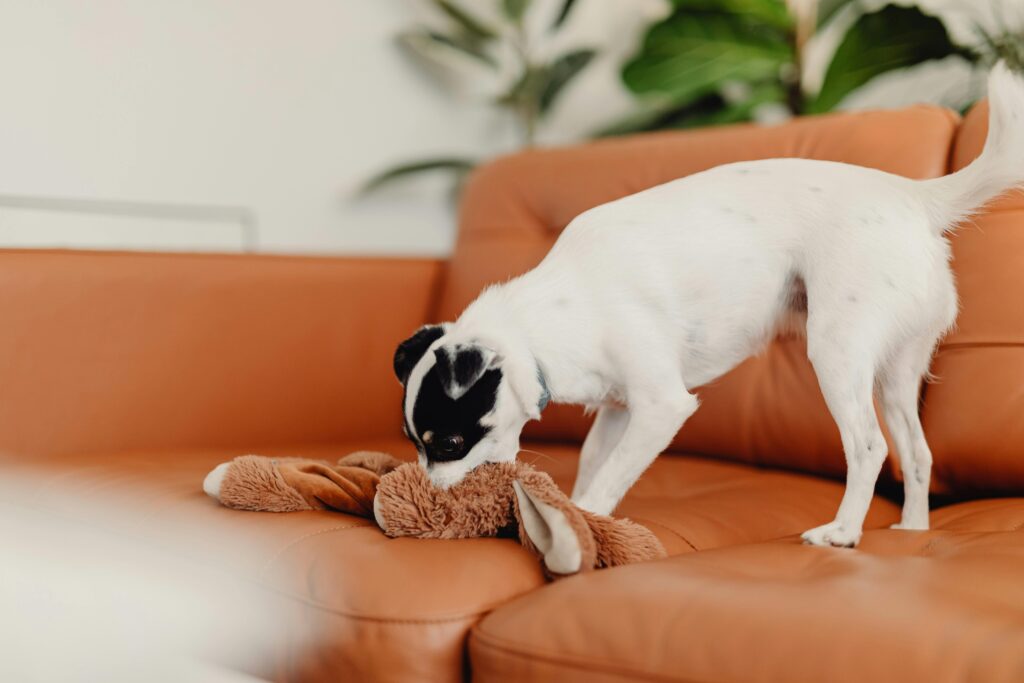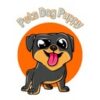
Puppy teeth are sharp—and so is the frustration when they sink into your favorite shoes, cords, or furniture. If you’ve recently brought home a furry little chewer, you’re probably wondering how to stop your puppy from turning your home into a chew toy.
The good news is that biting and chewing are completely normal puppy behaviors. Puppies explore the world with their mouths and go through a teething phase that increases their need to chew. But that doesn’t mean your belongings are fair game. With a few simple tricks, you can teach your puppy to chew appropriately while protecting your home.
Understand Why Puppies Bite
Before solving the problem, it helps to understand why it’s happening. Puppies chew for several reasons:
- Teething: From around 3 to 6 months, puppies go through teething, which can be uncomfortable. Chewing helps relieve the pressure.
- Exploration: Puppies use their mouths to investigate textures, shapes, and smells.
- Boredom: If a puppy isn’t mentally or physically stimulated, chewing becomes a way to entertain themselves.
- Attention-Seeking: Some puppies learn that biting objects gets a reaction—even if it’s negative.
- Lack of boundaries: Puppies don’t naturally know what’s allowed and what’s not. That’s where training comes in.
Now let’s look at how to redirect this behavior effectively.
1. Provide Plenty of Chew Toys
One of the simplest and most important steps is to give your puppy plenty of acceptable alternatives to chew. Choose a variety of safe chew toys that match your puppy’s age and chewing strength.
Good options include:
- Rubber toys (like KONGs)
- Rope toys
- Teething rings
- Frozen carrot sticks or frozen washcloths (to soothe sore gums)
Rotate toys every few days to keep things interesting. If your puppy has better options, they’re less likely to chew on your couch leg.
2. Use Bitter Spray on Off-Limits Items
Bitter sprays are safe, non-toxic deterrents with an unpleasant taste. Spray a small amount on furniture corners, cords, or shoes. Your puppy may try chewing once, but they’ll quickly learn those items taste bad.
Always test the spray on a small, hidden section first to ensure it doesn’t damage fabric or wood.
3. Puppy-Proof Your Home
Prevent problems by limiting access to tempting items. Pick up shoes, books, and remote controls when not in use. Use baby gates or playpens to create safe zones where your puppy can’t get into trouble.
If your puppy keeps chewing something they shouldn’t, remove it from their reach rather than constantly correcting them.
4. Teach “Leave It” and “Drop It” Early
Training basic commands like “leave it” and “drop it” is essential for curbing unwanted chewing. Practice with treats and toys until your puppy understands that letting go earns a reward.
If your puppy grabs something off-limits, stay calm. Offer a toy or treat in exchange. When they drop the object, praise them immediately.
5. Don’t Chase—Redirect Instead
If your puppy picks up something they shouldn’t, resist the urge to chase. To a puppy, being chased means playtime. Instead, calmly call them to you and offer a trade for a toy or treat. This keeps the interaction positive and prevents the behavior from becoming a game.
6. Keep Your Puppy Busy
A bored puppy is a destructive puppy. Make sure your pup is getting enough physical exercise and mental stimulation each day. This includes:
- Walks and sniff time
- Play sessions
- Puzzle toys
- Training games
A tired puppy is much less likely to chew out of frustration or excess energy.
7. Correct Gently and Consistently
If you catch your puppy in the act of chewing something they shouldn’t, interrupt calmly with a sound like “uh-uh” or “no.” Then immediately redirect them to a toy and praise them when they chew that instead.
Never yell or punish harshly. Puppies don’t understand punishment—they just become scared or confused.
8. Crate or Confine When You Can’t Supervise
When you’re not around to keep an eye on your puppy, use a crate or playpen to prevent chewing accidents. This not only protects your belongings but also teaches your puppy to settle down and self-soothe.
Make the space comfortable with soft bedding and safe toys. Over time, your puppy will learn to relax during alone time instead of finding things to chew.
9. Watch for Teething Cues
During teething, your puppy may become extra chewy, drooly, or irritable. Help them through this phase by offering frozen toys, teething treats, or cold wet washcloths. These soothe sore gums and make chewing feel good—without damaging your stuff.
10. Be Patient—It’s a Phase
The chewing phase doesn’t last forever. With consistency, patience, and the right tools, most puppies outgrow excessive biting by the time they’re around 6 months to a year old.
Stick to your plan, celebrate small wins, and remember—your puppy isn’t trying to be bad. They’re learning, growing, and counting on you for guidance.
Conclusion
Chewing is natural, but that doesn’t mean your puppy should chew everything in sight. With a mix of supervision, redirection, and positive reinforcement, you can guide your puppy toward better behavior and protect your home at the same time.
The earlier you start, the faster your puppy learns what’s okay to bite—and what’s not. And soon, your furniture, shoes, and sanity will all be a little safer.
